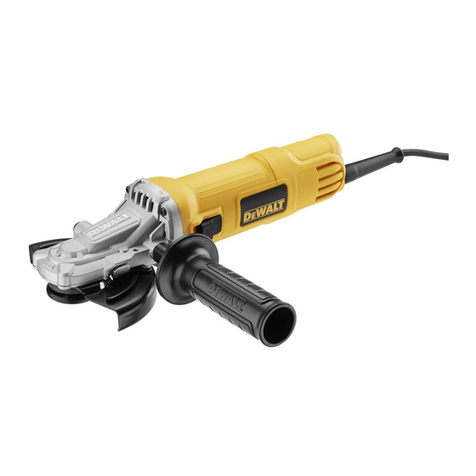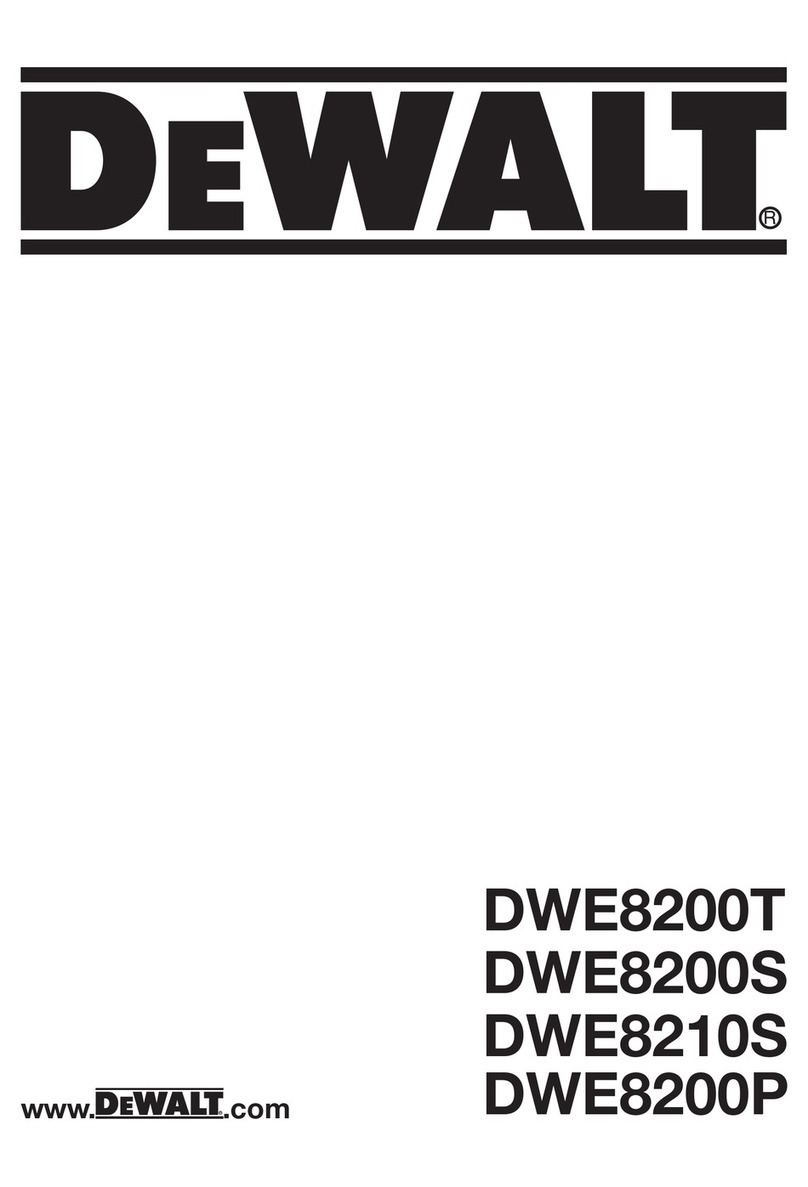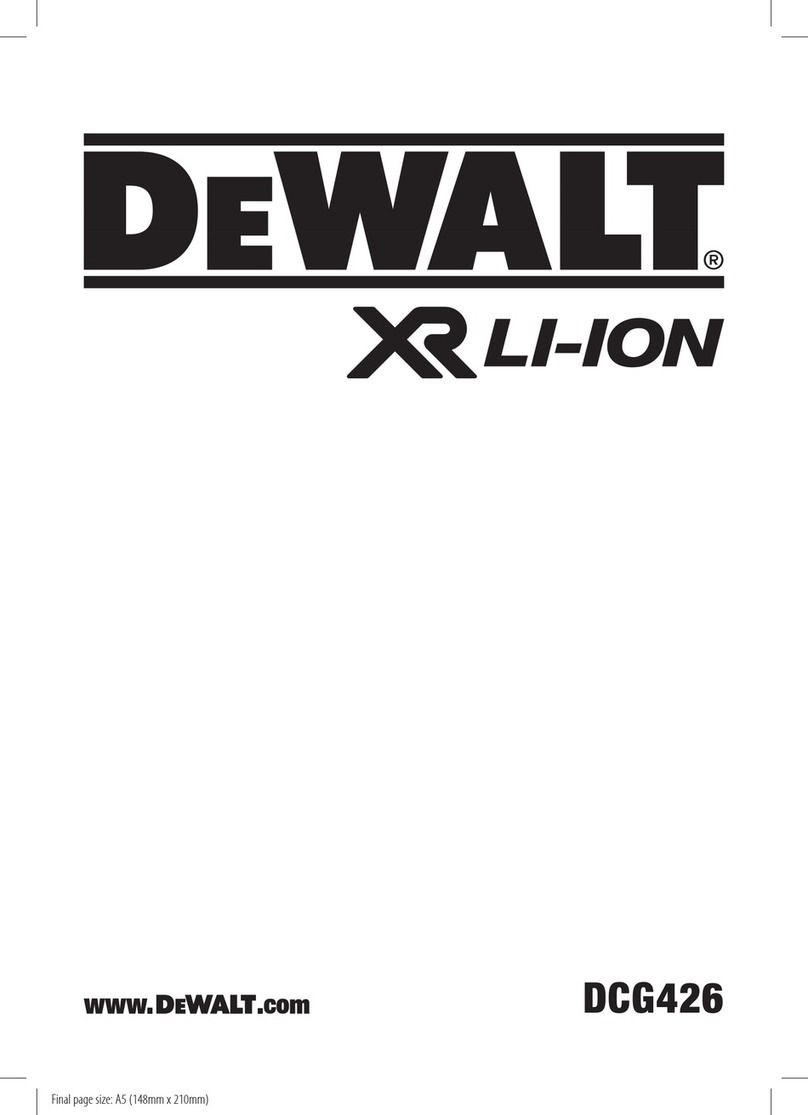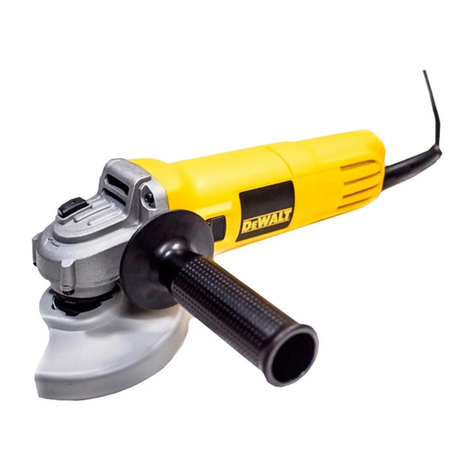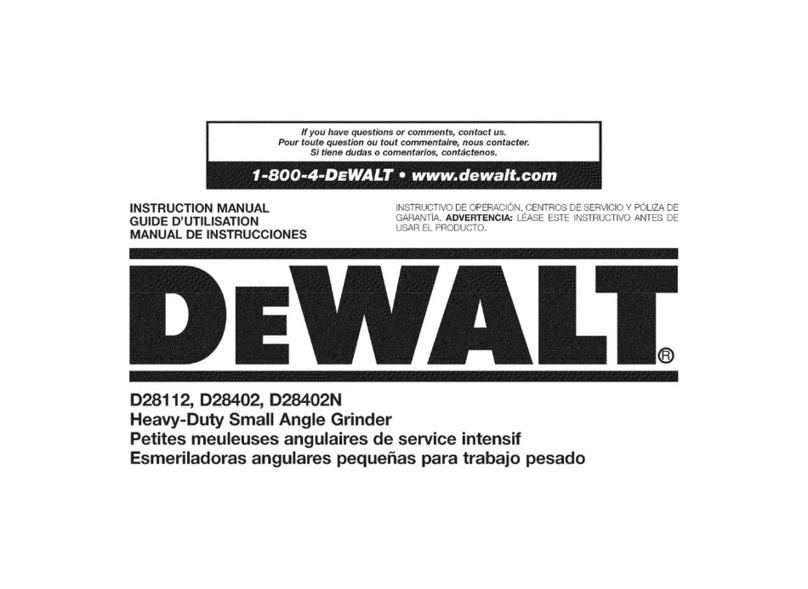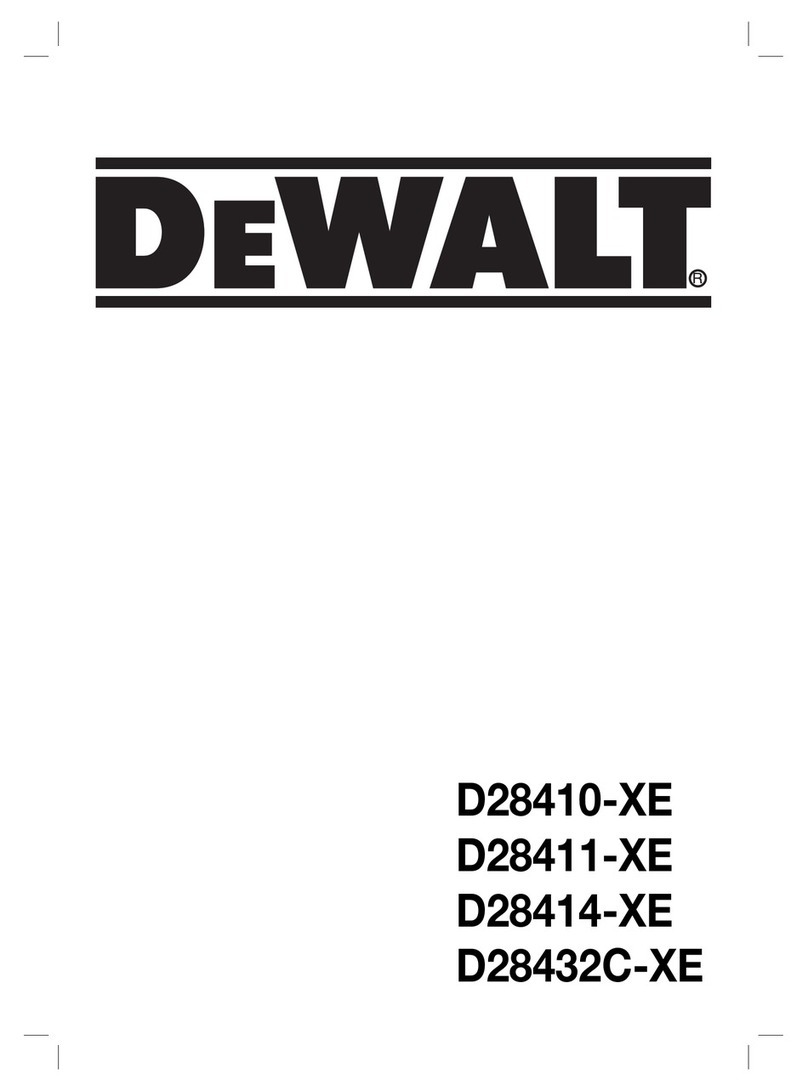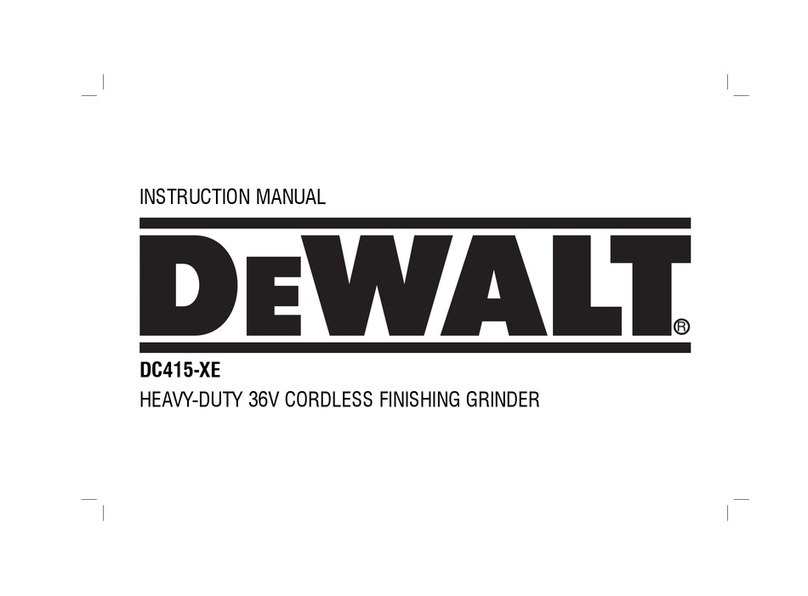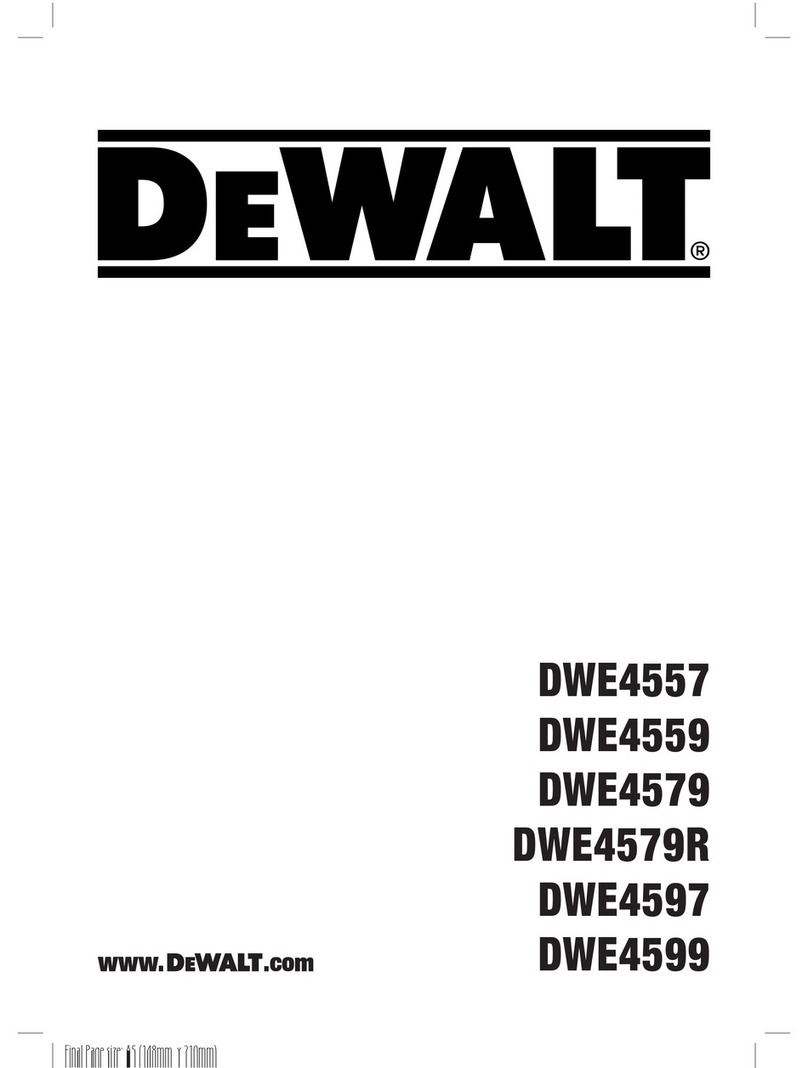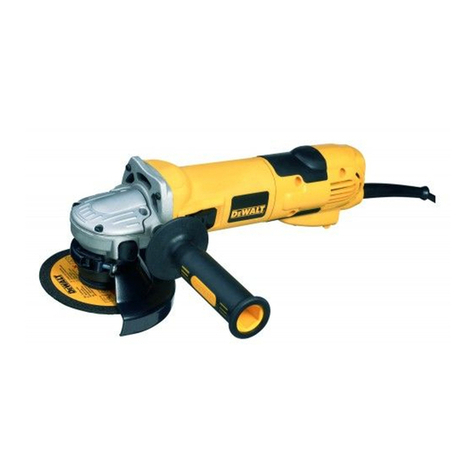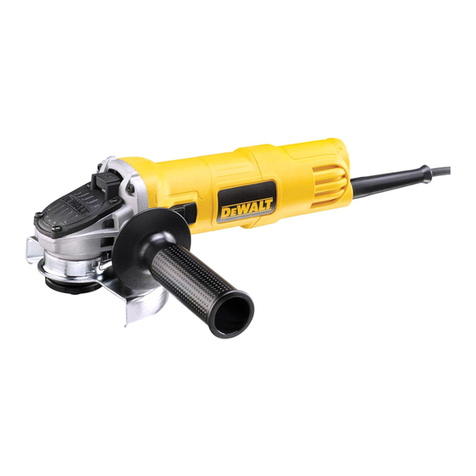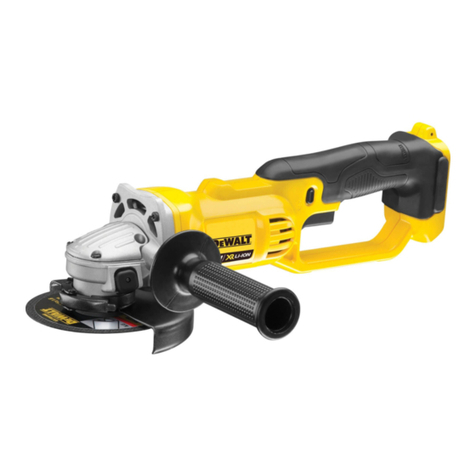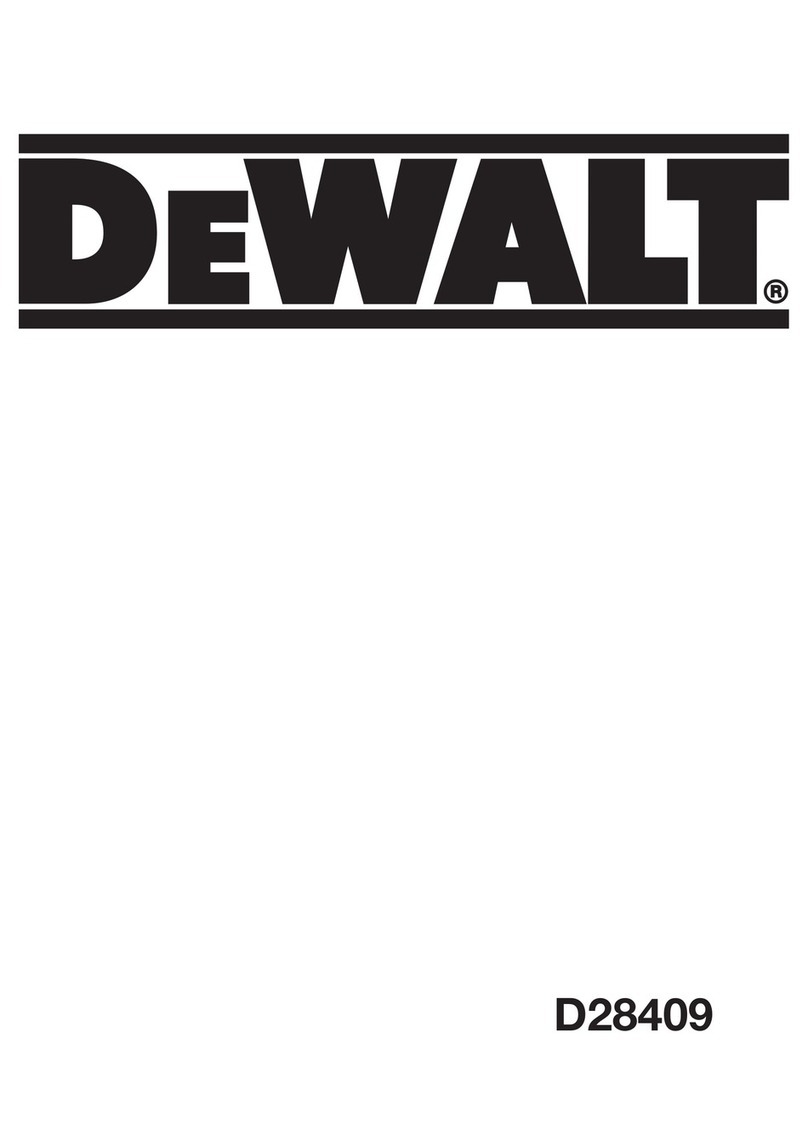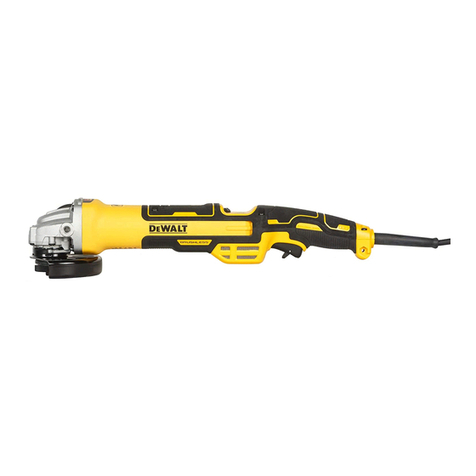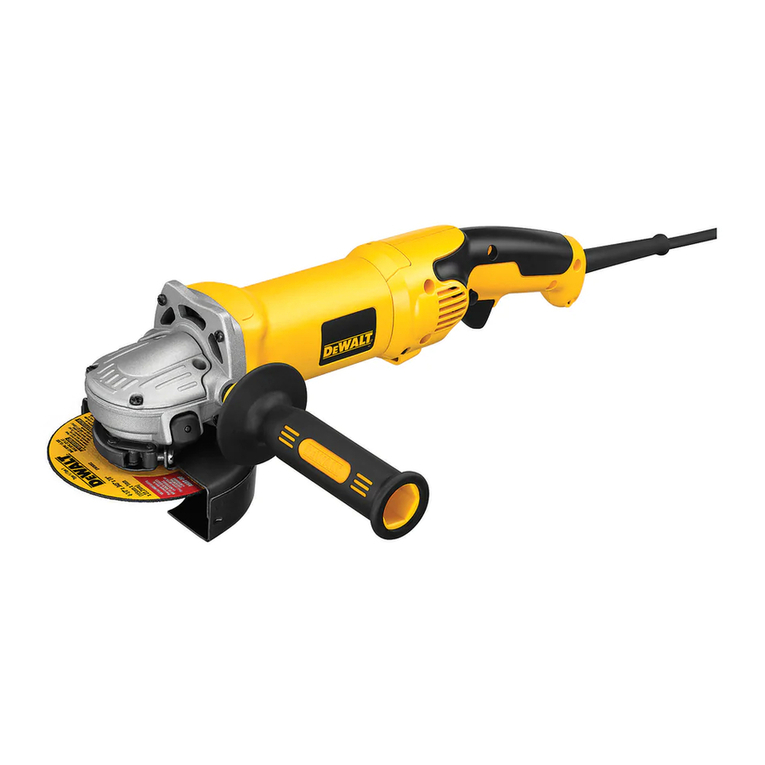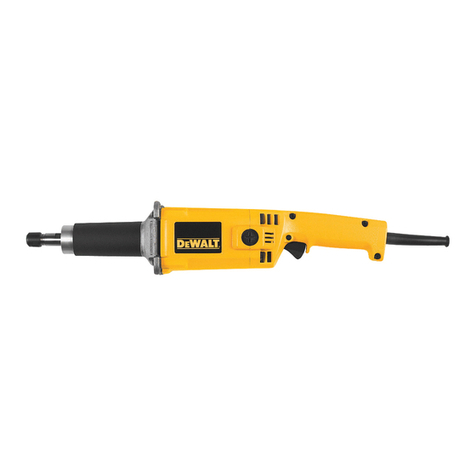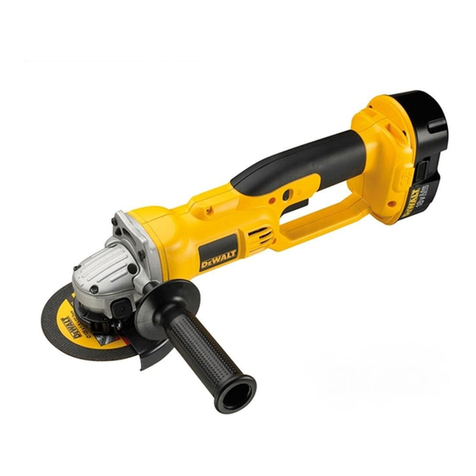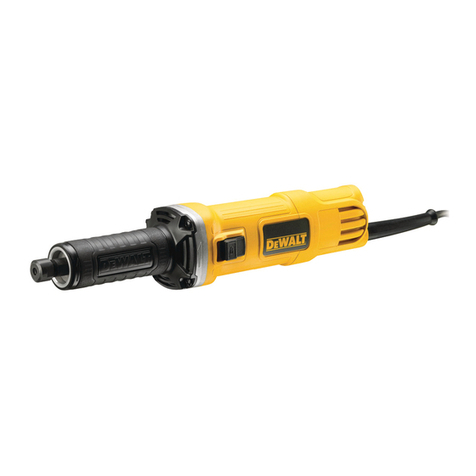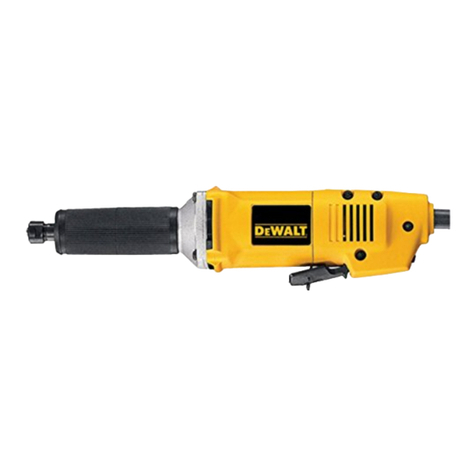ENGlISH
e)
When operating
a
power tool outdoors,
use an extension
cord
suitable for
outdoor use.
Use of
a
cord suitable for
outdoor use reduces the risk of electric
shock.
&
If operating apower tool in adamp
location is unavoidable, use a residual
current device (RCD) protected supply.
Use of an RCO reduces the risk of electric
shock.
3) PERSONAL SAFETY
a)
Stay alert, watch what you are
doing and use common sense when
operating apower tool. Do not use
apower tool while you are tired or
under the influence of drugs, alcohol or
medication.
A moment of inattention while
operating power tools may result in serious
personal injury.
b) Use personal protective equipment.
Always wear eye protection.
Protective
equipment such as dust mask, non-skid
safety
shoes,
hard hat, or hearing protection
used for appropriate conditions will reduce
personal injuries.
c)
Prevent unintentional starting. Ensure
the switch is in the off position before
connecting to power
source
and/or
battery pack, Picking up or carrying the
tool.
Carrying power tools with your finger
on the switch or energising power tools that
have the switch on invites accidents.
d) Remove any adjusting key or wrench
before tuming the power tool ono
A
wrench or
a
key left attached to
a
rotating
part of the power tool may result in personal
injury. .
e)
Do not overreach. Keep proper
footing and balance at ali times.
This
enables better control of the power tool in
unexpected situations.
&
Dress properly. Do not wear loose
clothing or jewellery. Keep your hair,
clothing and gloves away from moving
parts.
Loose clothes, jewellery or long hair
can be caught in moving parts.
g)
If devices are provided for the
connection of dust extraction and
collection facilities, ensure these are
connected and properly used.
Use of dust
collection can reduce dust-related hazards.
4) POWER TOOL USE ANO CARE
a)
Do not force the power tool. Use the
correct power tool for your application.
The correct power tool will do the job
better and safer at the rate for which it
was designed.
b) Do not use the power tool if the switch
does not
tum
it on and off.
Any power
tool that cannot be controlled with the switch
is dangerous and must be repaired.
c)
Disconnect the plug from the power
source and/or the battery pack from
the power tool before making any
adjustments, changing accessories, or
storing power tools.
Such preventive safety
measures reduce the risk of starting the
power tool accidentally
d) Store idle power tools out of the reach
of children and do not allow persons
unfamiliar with the power tool or these
instructions to operate the power tool.
Power too/s are dangerous in the hands of
untrained users.
e)
Maintain power tools. Check for
misalignment or binding of moving
parts, breakage of parts and any other
condition that may affect the power
tool's operation. If damaged, have the
power
tool repaired before use.
Many
accidents are caused by poor/y maintained
power tools.
&
Keep cutting tools sharp and c/ean.
Proper/y maintained cutting tools with sharp
cutting edges are less likely to bind and are
easier to control.
g)
Use the power tool, accessories and
tool bits
etc.,
in accordance with these
instructions taking into account the
working conditions and the work to
be performed.
Use of the power tool for
operations different from those intended
could result in
a
hazardous situation.
5) SERVICE
a)
Have your power tool serviced by
a' qualified repair person using only
identical replacement parts.
This will
ensure that the safety of the power tool
is
maintained.
ADOITIONAL SPECIFIC SAFETY RULES
Safety Instructions for Ali Operations
a)
This power tool is intended to function as a
grinder, sander (DWE4557 and DWE4597),
wire brush, or cut-off tool. Read ali safety
warnings, instructions, illustrations and
specifications provided with this power
tool.
Fai/ure to follow ali instructions listed below
may result in electric shock, fire and/or serious
injury.
36
ENGlISH
b)
Operation such as polishing is not
recommended to be performed with this
powertool.
Operation such as sanding (DWE4559;
DWE4579; DWE4579R and DWE4599) is not
recommended to be performed with this
powertool.
Operations for which the power tool
was
not
designed may create
a
hazard and cause
personal injury.
c)
Do not use accessories which are not
specifically designed_and recommended
by the tool manufacturer.
Just because the
accessory
can be attached to your power tool,
it does not assure safe operation.
d)
The rated speed of the accessory must
be at least equal to the maximum speed
marked on the power tool.
Accessories
running faster than their rated speed can break
and fly apart.
e)
The outside diameter and the thickness of
your accessory must be within the capacity
rating of your power tool.
Incorrectly sized
accessories cannot be adequately guarded or
controlled.
&
The arbour size of wheels, flanges, backing
pads or any other accessory must properly
fit the spindle of the power tool.
Accessories
with arbour holes that do not match the
mounting hardware of the power tool will run
out of balance, vibrate excessively and may
cause loss of control.
g)
Do not use
a
damaged accessory. Before
each use
inspect
the accessory such
as abrasive wheel for chips and cracks,
backing pad for
crecks,
tear or excess
wear, wire brush for loose or cracked
wires. If power tool or accessory is
dropped, inspect for damage or install an
undamaged accessory. Atter inspecting
and instal/ing an accessory, position
yourself and bystanders away from the
piane of the rotating accessory and run
the power tool at maximum no-loed speed
for one minute.
Damaged accessories will
normally break apart during this test time.
h)
Wear personal protective equipment.
Depending on application, use face
shield, safety goggles or safety glasses.
As appropriate, wear dust mask, hearing
protectors, gloves and workshop apron
capable of stopping smallabrasive or
workpiece fragments.
The eye protection
must be capable of stopping flying debris
generated by various operations. The dust
mask or respirator must be capable of
filtrating particles generated by your operation.
Prolonged expoeote to high intensity noise may
cause hearing loss.
i)
Keep bystanders asafe distance away
from work area. Anyone entering the
work area must wear personal protective
equipment.
Fragments of workpiece or of
a
broken accessory may fly away and cause injury
beyond immediate area of operation.
j)
Hold power tool by insulated gripping
surfaces only, when performing an
.opereiion where the cutting accessory
may contact hidden wiring or its own corti.
Cutting
accessory
contacting
a
"live" wire may
make exposed metal parts of the power tool
"live" and could give the operator an electrical
shock.
k)
Position the cord clear of the spinning
accessory.
If you lose control, the cord may be
cut or snagged and your hand or arm may be
pulled into the spinning accessory.
I)
Never lay the power tool down unti the
accessory has come
to
acomplete stop.
The spinning accessory may grab the surface
and pull the power tool out of your control.
m) Do not run the power tool while carrying
it at your side.
Accidental contact with the
spinning
accessory
could snag your clothing,
pulling the
accessory
into your body
n)
Regularly clean the power tool's air vents.
The motor's fan will draw the dust inside
the housing and excessive accumulation of
powdered metal may cause electrical hazards.
o)
Do not operate the power tool near
flammable materials.
Sparks could ignite
these materia/s.
p)
Do not use accessories that require liquid
coolants.
Using water or other liquid coolants
may result in electrocution or shock.
FURTHER SAFETY INSTRUCTIONS
FOR ALL OPERATIONS
Causes and Operator Prevention
of Kickback
Kickback is
a
sudden reaction to
a
pinched or
snagged rotating wheel, backing pad, brush or
any other
accessory.
Pinching or snagging
causes
rapid stalling of the rotating accessory which in turn
cause;' the uncontrolled power tool to be forced in
37
